Introduction
Investment is considered one of the most important factors determining growth and development of a country. With a population of around 1.4 billion, and GDP of $3.2 trillion, India has emerged as one of the fastest-growing economies in the world, offering a thriving environment for investments, both domestic and foreign. According to IMF’s projections, India will emerge as the world’s third largest economy by 2027 as its GDP is poised to cross US$5 trillion dollars by surpassing Japan and Germany.
What do you understand by investment in an economy?
Investment refers to the expenditure incurred to create new capital assets. These capital assets include buildings, machinery, raw material, equipment, etc. Expenditure on these assets results in an increase in economy’s productive capacity. Investment expenditure is classified under Induced Investment and Autonomous Investment (refer box 1.1).
Investment plays six macroeconomic roles i.e.
- It contributes to current demand of capital goods, thus it increases domestic expenditure.
- It enlarges the production base (installed capital), increasing production capacity.
- Modernizes production processes, improving cost effectiveness;
- It reduces labour needs per unit of output, thus potentially producing higher productivity.
- Allows for the production of new and improved products, increasing value added in production.
- Incorporates international world-class innovations and quality standards, bridging the gap with more advanced countries and helping exports and an active participation to international trade.
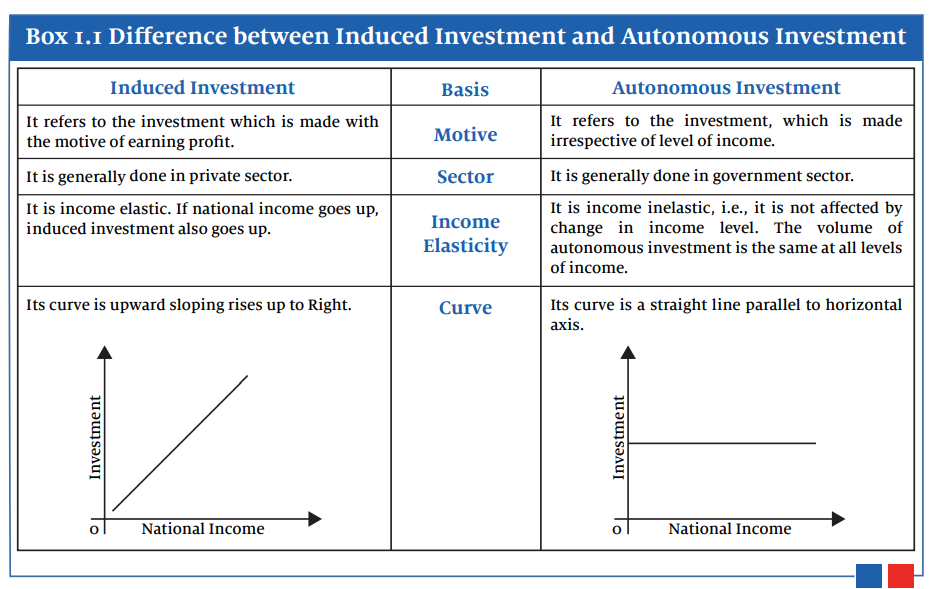
1.1 What are different forms of Investment?
Investments can take various forms, and they are classified based on their nature, structure, and underlying assets. These include Fixed Rate, Market Linked and Alternative Investment Instruments.
- Fixed-rate Investment Instruments
- Bonds: Fixed-income instrument which yields returns at a fixed rate of interest.
- Public Provident Fund: Under this scheme, interest on principal investment is paid by the government.
- Market- Linked Investment Instruments
- Stocks refer to equity investment made in any company.
- Mutual funds pool money from multiple investors and invest in various financial instruments including equities, debt securities, venture capital etc.
- National Pension Scheme pools in money from numerous investors and then invests the corpus in various equity and debt securities.
- Alternative Investment Instruments
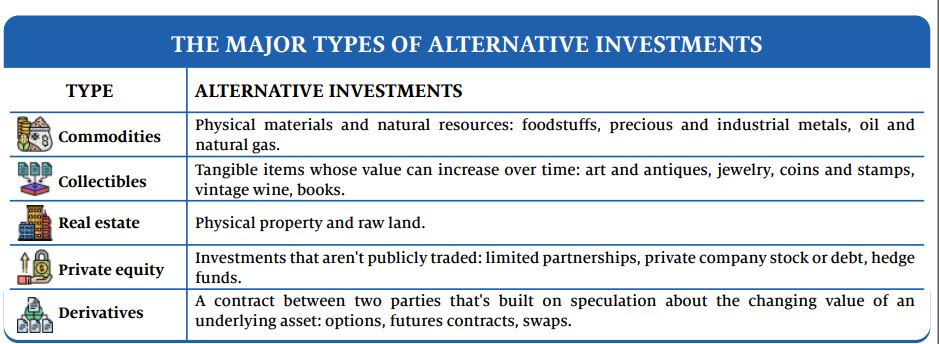

In the recent years, India has emerged as one of the most attractive destination for investment and doing business.
Why India is a preferred destination for investment?
India offers a growing and thriving environment for investments, both domestic and foreign. Some of the reasons which make India as a magnet of investments are:
- Economic Growth: Multiple agencies including IMF, World Bank have predicted India to be the fastest-growing economy in 2023-24, even as major economies such as USA continue to shrink under the pressure of a global economic slowdown.
- Geographical Location: India's strategic location at crossroads of major trade routes (Strait of Malacca, Hormuz), close to markets of South East Asia, Middle East, ensures efficient connectivity with global markets and attract international investors seeking access to diverse and expanding trade networks.
- Skilled Workforce: India has a rich and wide pool of skilled and educated professionals, particularly in fields of information technology, engineering, and sciences. This skilled labour force attracts Multi-national companies (MNCs) and investors looking for talent.
- Investor Friendly Policy: Indian government steps like single window clearance, easy entry and exit policy; ease in FDI norms etc. has improved the business environment which can further boost the investment rate in India.
- Infrastructure Development: Indian government has been investing in infrastructure development (e.g. National Infrastructure Pipeline), including transportation (National Waterways and multi-modal connectivity), energy, and logistics etc. Improved infrastructure can reduce operational costs and enhance the overall business environment.
- Global Offshoring: Global companies have been outsourcing services such as software development, customer service etc. to India since the advent of Internet. Emergence of distributed work models is further bringing new momentum to the idea of India as the back office to the world.
- In coming decade, number of people employed in India for jobs outside the country is likely to at least double, reaching more than 11 million by 2030.
- Political Stability: India is recognized as a stable democracy and its political system has shown resilience over the years. Stability of central government, enhanced bilateral and multilateral relations and successful hosting of G-20 contribute to an increase in investment flows.
- Investment in manufacturing: India is poised to become the factory to the world with corporate tax cuts, investment incentives and infrastructure spending helps in driving capital investments in manufacturing.
- As per Morgan Stanley report, Manufacturing’s share of GDP in India could increase from 15.6% currently to 21% by 2031.
- Energy transition: Rise in India’s energy consumption along with transition towards renewable energy (500GW by 2030) opens up a new segment to boost investment growth.
- India’s commitment to clean energy initiatives (e.g. Green Hydrogen Mission) can attract investors keen on participating in growing and environmentally conscious energy sector in India.
- Consumer Market: India is the most populous country, making it one of the largest consumer markets in the world. Also, the large and fast growing middle class, diverse population presents significant opportunities to tap into the expanding consumer base.
- Demographic Dividend: With world's largest youth population, around 66 percent of India’s total population is below age of 35. This demographic dividend is a key attraction for foreign investors and act as a catalyst for robust workforce, economic growth, and productivity.
- Natural Resources: India is endowed with diverse natural resources, including fertile alluvial plains, mineral rich Chota Nagpur Plateau etc. plays a crucial role in attracting investment. These resources support industries like agriculture, mining and offer opportunities for sustainable development and investments in renewable energy, making India an appealing destination for a broad spectrum of investors.
What impact an investment creates on developing economy like India?
Investment needs are much higher in developing than in developed economies as it is pivotal in shaping the landscape of developing nations like India, which aspires to become a developed country by 2047. The growth of the past two decades has been driven by robust domestic demand, strong investment activity bolstered by government’s push for investment.
- Growth and revenue generation: Along with macroeconomic stimulus due to investment, it drives growth by raising total factor productivity, employment and the efficiency of resource use in the recipient economy. Successful investments contribute to increased economic activity, leading to higher tax revenues for the government.
- Transfer of technology: Investment promotes technology transfer from developed to developing countries through FDI, foreign licensing, joint ventures etc. Foreign technology collaboration acts as an effective means to address technology gap in any developing economy and boost development, streamline production etc.
- For instance, Brazil has started sharing technology with India to help it achieve 20% ethanol blending for petrol by 2025-2026, and will improve productivity in livestock and poultry sector.
- Promotes competition: Investment promotes growth of new players/enterprises in market and spurs domestic competition and thereby leading eventually to higher productivity and lower prices.
- Between 1991 and 2012, number of Multinational Companies (MNCs) in India quadrupled and there has been a consistent rise in FDI in last decade, with FY22 receiving $84.8 billion, despite COVID pandemic.
- Integration and Trade: Investment aids integration into the global economy by boosting foreign trade flows. Investment also contributes to improving balance of payments of host countries by increasing export opportunities and reducing imports and flow of foreign capital.
- Infrastructure Development: Investments often lead to creation and improvement of infrastructure, including transportation networks, energy facilities, and communication systems, which can enhance productivity, reduce transaction costs, and attract further investments.
- Increased Foreign Exchange Reserves: Foreign investments can lead to an increase in a country's foreign exchange reserves. This provides a cushion against economic uncertainties and can be used to stabilize the national currency, making the economy more robust.
- Improved Standard of Living: A growing economy, driven by investments, generally results in an improved standard of living for the population. This includes better access to education, healthcare, and other essential services.
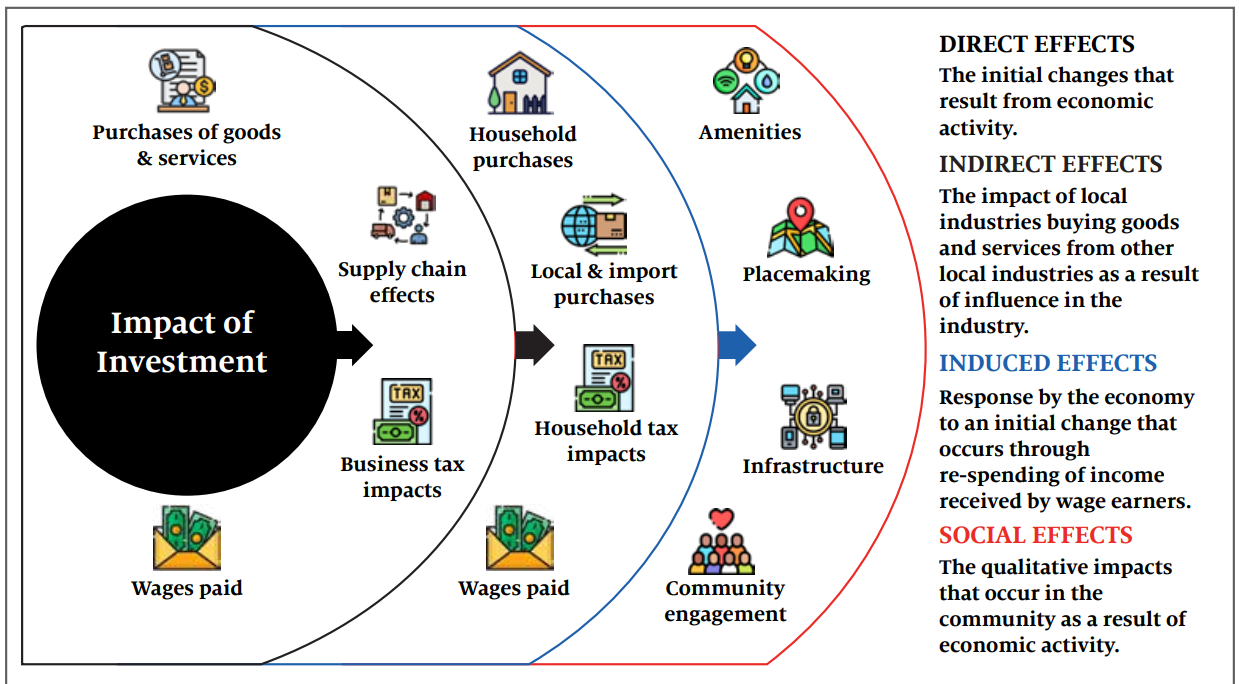
What are the measures taken to attract investment?
Various concerted efforts have been made by Government to build an investor-friendly ecosystem that supports domestic investors as well as Foreign Direct Investment (FDI) and will boost the economy manifold.
Table 4.1. Efforts taken by India to attract investment | |
Manufacturing | |
| Make in India |
|
| Investor Facilitation Cell (IFC) |
|
Empowered Group of Secretaries (EGoS) and Project Development Cells (PDCs) |
|
| Production Linked Incentive (PLI) Scheme |
|
| Taxation Laws (Amendment) Act, 2019 |
|
| Phased Manufacturing Programme (PMP) |
|
| Enhancement of Competitiveness in Indian Capital Goods Sector- Phase 2, Ministry of Heavy Industries |
|
Business Facilitation | |
| Ease of Doing Business (EoDB) Index |
|
| Jan Vishwas (Amendment of Provisions) Act, 2022 |
|
| Invest India, Department of Industrial Policy & Promotion, Ministry of Commerce and Industry |
|
| National Infrastructure Pipeline (NIP) for FY 2019-25 |
|
| National Monetisation Pipeline (NMP) |
|
| Simplified Performa for Incorporating Company Electronically (SPICE+),Ministry of Corporate Affairs |
|
| National Intellectual Property Rights (IPR) Policy 2016 |
|
| National Investment and Infrastructure Fund (NIIF) |
|
Foreign Investment | |
| Foreign Direct Investment (FDI) |
|
| Foreign Exchange Management Act (FEMA) |
|
| Bilateral Investment Treaties (BITs) |
|
| Department for Promotion of Industry and Internal Trade (DPIIT), Ministry of Commerce and Industry |
|
Government support | |
| National Single Window System (NSWS), Ministry of Commerce & Industry |
|
| Investment Clearance Cell (ICC) |
|
| Insolvency and Bankruptcy Code (IBC) 2016, |
|
Start-ups | |
| Pradhan Mantri Mudra Yojana |
|
| Fund of Funds for Startups (FFS) Scheme |
|
| Income Tax Exemption for 3 years |
|
| Startup India Seed Fund Scheme (SISFS) |
|
Box 4.1. Rise of Ethical InvestingEthical investing is an investment strategy in which an investor chooses investments based on an ethical code, such as religious, social, moral or social values, and financial returns. In India, ethical investing is increasing due to global trends, COVID-19 impacts, awareness due to social media, and expanding investment sectors like agriculture, energy etc.
Types of Ethical Investments
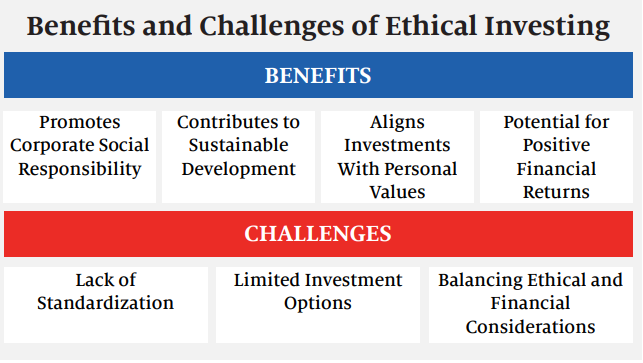 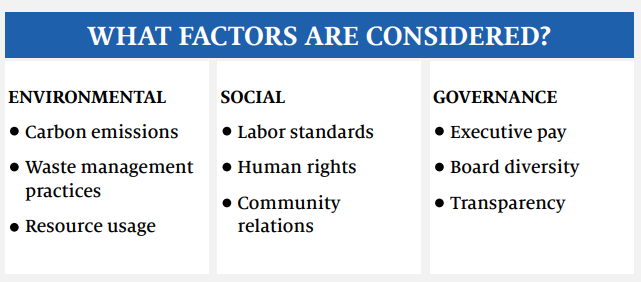 |
What are the challenges in attracting investments in India?
The investment climate in India has undergone significant transformations, positioning it as an attractive destination for global investors. India witnessed an impressive growth of 85.09% since 2015, reaching the highest-ever annual FDI inflow of US$83.57 billion in FY22 (DPIIT). While India’s investment landscape is thriving, certain challenges pose concerns for investors.
- Complex tax structures: Rapid changes in policies and inconsistent implementation can create uncertainty for investors.
- For example, sudden changes in tax structure impact certain sectors, such as gaming industry, which faced a 28% GST on gross revenue.
- Concentration: Uneven development of economic hubs like Special Economic Zones, Export Promotion Zones, and recent mega Global Financial Centre in Gujarat is not conducive to the holistic growth of the country.
- Also, economic disparity among states, with only the top 5 states (Maharashtra, Tamil Nadu, UP, Gujarat, and Karnataka) contributing about 50% of India’s total GDP, suggests inefficient resources utilization.
- Infrastructural hurdles: Despite improvements, India still faces challenges in terms of inadequate infrastructure, particularly in sectors such as transportation, energy, and logistics.
- For instance, US-based auto leader Ford and bike maker Harley-Davidson discontinued their India operations in recent years, along with other notable exits like Cairn Energy, Daiichi Sankyo, and Carrefour.
- Logistics: There is a high cost to logistics due to heavy reliance on road transport, lack of multi modal connectivity and poor port infrastructure etc. Further, logistics cost is higher for low value or bulk items such as those in the agricultural sector.
- Skill Shortages: Despite having a large and young population, there are challenges related to skill shortages in industries, further hindering MNCs from shifting operation to India as well as deters investment.
- ‘National Employability Report for Engineers 2019’ by Aspiring Minds, has shown that over 80% of engineers in India are unfit to take up any job in the knowledge economy.
- Labour Laws: The complexity of labour laws and the challenges associated with labour market flexibility can be a concern for investors. Reforms in labour laws to balance worker rights with the need for flexibility in hiring and firing are often debated.
- Geopolitical factors: The fallout of the war in Ukraine with the triple food, fuel and finance crises, along with the Covid-19 pandemic and climate disruption, are adding stress, particularly in developing countries leading to a decline in investment.
- According to ‘Investment Trend Monitor’ by UNCTAD, global FDI has seen a sharp decline (42%) in 2020 because of COVID-19 pandemic from US$1.5 trillion in 2019 to US$859 billion in 2020.
What measures can be taken to tackle challenges in attracting investments?
Despite several challenges which impede the attraction of investments in any country or region, several steps can be taken to reduce bureaucratic hurdles, providing incentives, investing in infrastructure etc. These include
- Open markets: Reduce restrictions on FDI and providing open, transparent and dependable conditions for all kinds of firms, whether foreign or domestic, relatively flexible labour markets and protection of IPR can boost the investment flows in the country.
- Infrastructure Creation: There is need to establish high-quality infrastructure, ensure multi modal connectivity, adequate and reliable supply of energy, skilled workforce, etc. It can be done through public-private partnerships designed in cooperation with investors to attract foreign investments.
- Develop skilled workforce: A skilled workforce is critical for attracting foreign investment, as investors look for talent to support their operations. Therefore, increasing government spending on education and training programs designed to ensure market oriented skills can further boost investment flows.
- Strengthening relationships: Building strong international relationships through bilateral and multilateral agreements, utilising platforms like Foreign Investment Advisory Service (FIAS) of the World Bank etc. to attract foreign investment. This can also provide access to new markets and technology, which can drive economic growth.
- Offer incentives and tax breaks: Governments can offer a range of incentives and tax breaks to attract investment. Measures such as tax holidays, reduced tariffs, and exemptions from certain taxes, incentives in terms of grants and subsidies can support investment in specific industries or regions.
- Coordination: Strengthen co-ordination at policymaking and implementing levels by establishing inter-ministerial councils, task forces and working groups. Setting up effective multi-level governance systems and involving stakeholders such as industry, academia etc. can address implementation challenges.
- Strengthen linkages: Implement comprehensive cluster development programmes facilitating business linkages, cross-sectorial interactions, taking into account local businesses and available resources. Also steps should be taken to provide investment facilitation and aftercare services to foster integration of foreign investors in local economies through strategic partnerships and collaboration with domestic entrepreneurs.
- Promotion strategies: Implement investment promotion strategies that allow to identify, prioritise and attract productivity-enhancing and knowledge-intensive investment, through intelligence gathering (e.g. market studies), sector-specific events (e.g. business fairs, country missions), and pro-active investor engagement (e.g. one-to-one meetings, campaigns, enquiry handling).
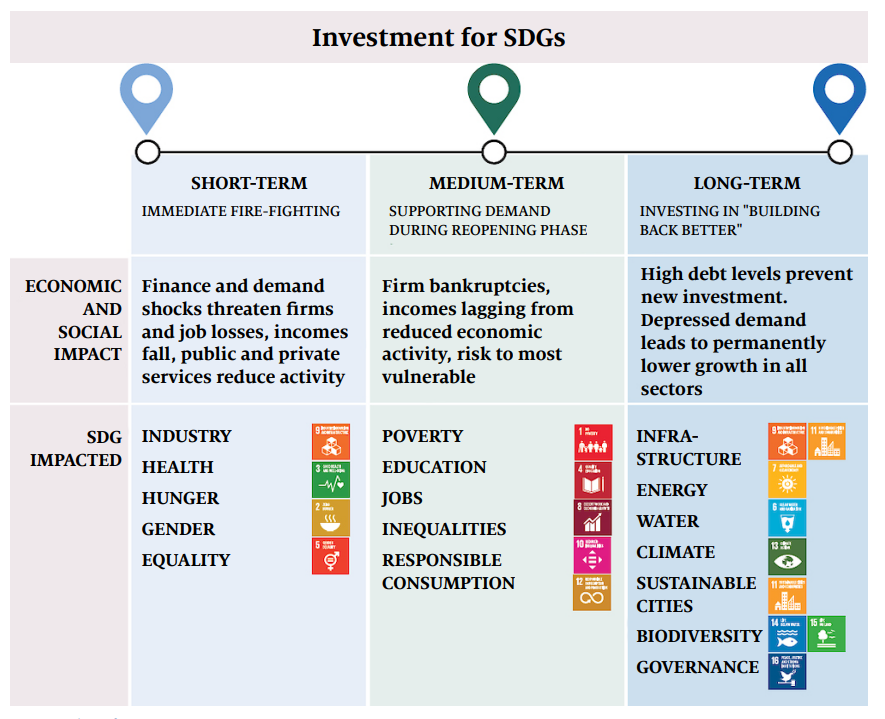
Conclusion
Promoting and attracting foreign Investment in India is crucial for country's economic progress and advancement. India has successfully implemented various schemes and policies to create a favourable investment climate, and to foster a conducive business environment. Corporate tax reduction; reduced FDI restrictions etc. could result in FDI inflows of US$ 120-160 billion annually by 2025. However, sustaining and further increasing foreign investment requires government's on-going commitment to reforms, promoting stability, and addressing any remaining challenges. By doing so, India can continue its trajectory as a global investment destination, leading to long-term economic prosperity.
- Tags :
- economy
- Investment
- ECONOMY
- Economy





